A raised garden bed is essentially a contained area elevated above ground level, filled with nutrient-rich soil. It can be made using wood, concrete blocks, or recycled items like old tires or pallets. These beds are typically rectangular or square but can also be customized to fit any space.
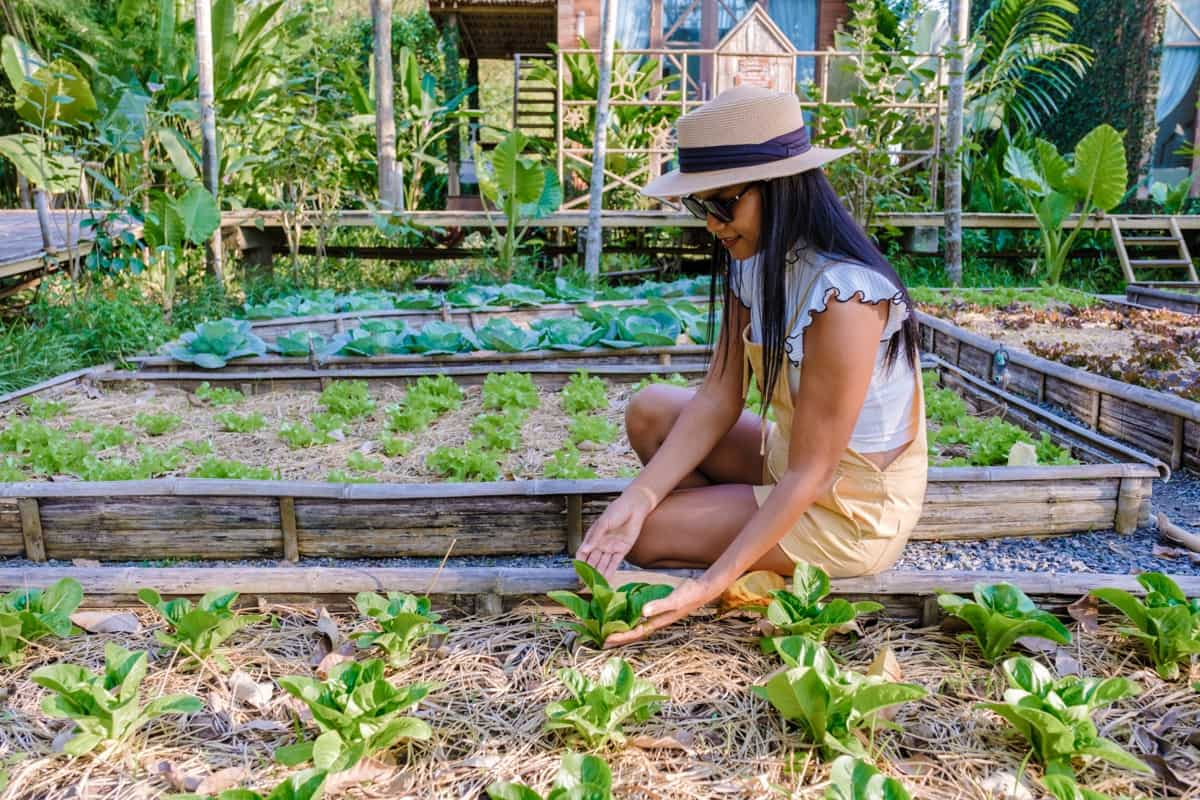
Benefits of Raised Garden Beds
One of the key benefits of raised garden beds is improved drainage. The elevated design allows excess water to drain freely, preventing waterlogging and root rot. Additionally, the controlled environment helps keep weeds at bay while making it easier to manage pests. Another advantage of raised garden beds is their versatility. They can be built at different heights to accommodate those with physical limitations or for aesthetic purposes.
Raised beds also provide better control over soil quality since you can fill them with high-quality compost and amend the soil as needed. Additionally, raised garden beds help to prevent soil erosion. The walls of the bed act as a barrier that keeps soil in place during heavy rains or watering sessions. Raised garden beds make it easier to implement protective measures such as installing mesh screens or applying organic pest deterrents.
Materials for Building Inexpensive Raised Garden Beds
One option for building a budget-friendly raised garden bed idea is untreated lumber. This can be easily found at your local store and cut to the desired size. Another affordable option is using cinder blocks or concrete blocks. These are sturdy and create a clean and modern look for your garden.
If you’re looking for an eco-friendly raised garden bed approach, consider repurposing materials such as old tires, wooden crates, or scrap wood. These items can often be found for free or at a low cost and add a unique touch to your garden. For those who prefer a more industrial look, metal troughs or corrugated metal sheets are great options. They are durable and provide excellent drainage for your plants.
Top 18 Best Inexpensive Raised Garden Bed Ideas
Using Recycled Materials for Raised Garden Beds
One of the most budget-friendly, inexpensive raised garden bed ideas is to use recycled materials. Not only does this help reduce waste, but it also adds a unique and charming touch to your garden. Old wooden pallets can be repurposed into fantastic raised garden beds. Dismantle the pallets and rearrange the planks to create a frame. Fill it with soil, and you’re ready to plant your favorite flowers or vegetables.
In case you missed it: DIY Home Remedies to Control Pests in Home Garden: Recipe Preparation and Use for Organic Benefits
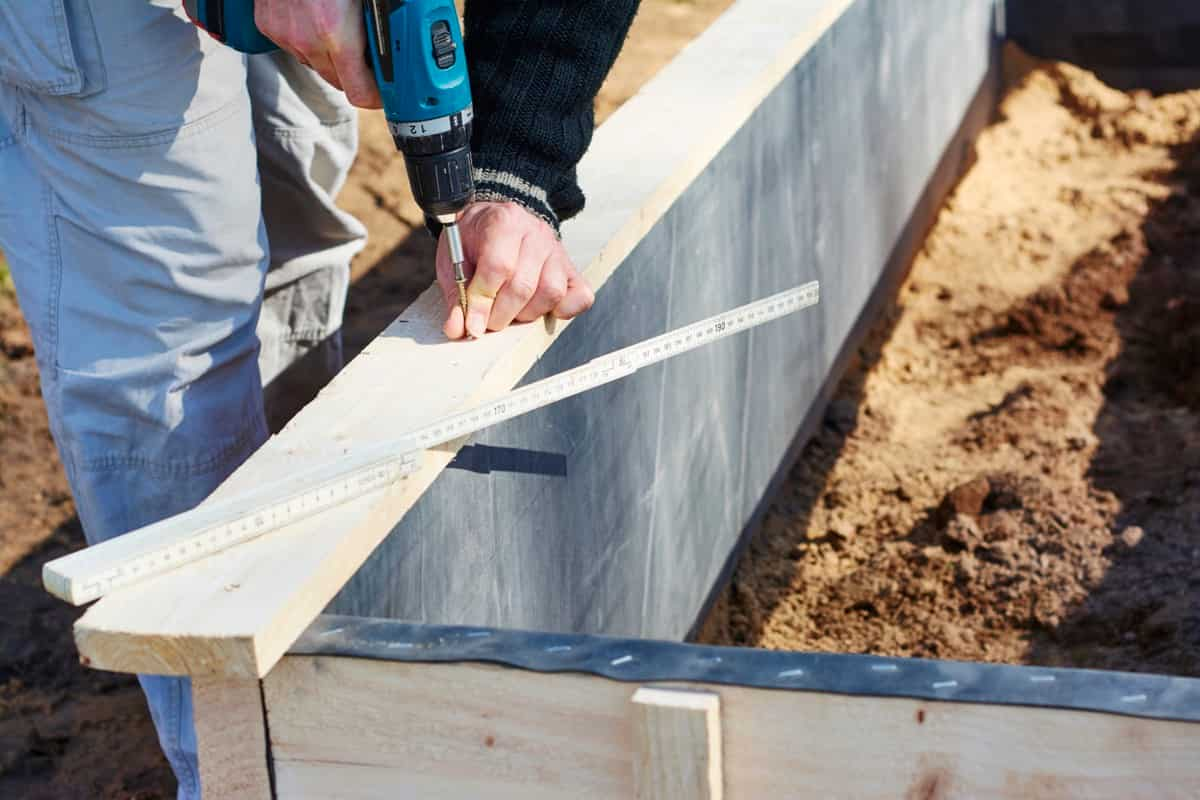
Another creative idea is using old tires as raised garden beds. Paint them in vibrant colors, stack them on top of each other, and fill them with soil. You have an eye-catching planter that will surely impress your neighbors. If you want a more natural look, consider constructing a raised bed with straw bales. These inexpensive materials can act as your plants’ walls and growing medium.
DIY Pallet Raised Garden Bed Ideas
Pallets are versatile and readily available, making them a great choice for inexpensive raised garden bed ideas. One of the easiest ways to repurpose pallets into raised beds is simply stacking them on top of each other. You can secure them with screws or nails to ensure stability. This allows you to customize the bed size and shape according to your needs.
To prevent soil from spilling out between the slats, line the inside of your pallet bed with landscape fabric or cardboard before filling it with soil. Remember, when using pallets for gardening projects, choosing ones not treated with chemicals harmful to plants is important.
Cinder Block Raised Garden Bed Designs
They can also be repurposed to create inexpensive raised garden bed ideas. One of the benefits of using cinder blocks is their durability. These blocks are made to withstand heavy loads, making them perfect for supporting the weight of soil and plants in a raised bed. Plus, their hollow centers provide excellent drainage, preventing waterlogged roots. To prevent soil erosion or leakage between the blocks, line the inside edges with landscape fabric before filling it with soil. This will help keep everything contained while still allowing for proper drainage.
Using Old Tires for Raised Garden Beds
It is a budget-friendly and inexpensive raised garden bed idea to repurpose these discarded materials. Not only does it prevent the tires from ending up in landfills, but it also provides an excellent growing space for your plants. To create a raised bed with old tires, clean them to remove debris. Then, place the tires on a level surface in your desired location. You can stack multiple layers of tires to create more depth for planting.
Next, fill the tire beds with nutrient-rich soil and compost. Choose a well-draining mix that will provide optimal growing conditions for your plants. Using old tires as raised garden beds saves money and contributes to environmental sustainability by repurposing waste materials into functional gardening structures.
In case you missed it: DIY Home Remedies to Control Diseases in Home Garden: Recipe Preparation and Use for Organic Benefits
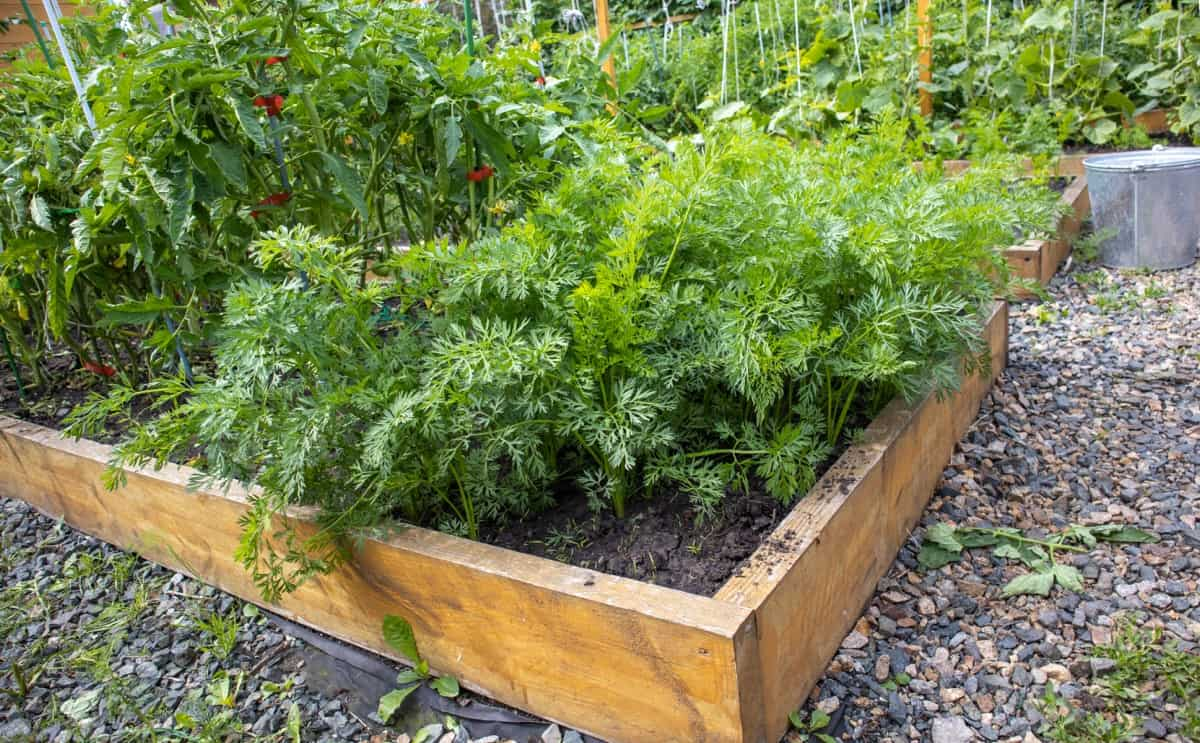
Creating a Raised Bed with Straw Bales
This method is not only budget-friendly but also incredibly easy to set up and inexpensive raised garden bed ideas. To start, choose a sunny location in your garden and lay down a layer of cardboard or landscape fabric to prevent weeds from growing through the bales. Then, arrange the straw bales in a rectangular shape, ensuring they are tightly packed together.
Next, fill the inside of the bale frame with good-quality soil mixed with compost. This will provide nutrients for your plants to thrive. You can then plant directly into the top of the straw bales, spacing them out according to their specific requirements. Using straw bales as a raised bed alternative is cost-effective and offers excellent insulation during colder months.
Building a Raised Garden Bed by Using Concrete Blocks
Concrete blocks are one of the most inexpensive raised garden bed ideas. Not only are they affordable, but they also provide excellent stability and durability for your garden. Firstly, you’ll need to measure where you want to build your raised bed. Start by laying down a gravel or sand layer to create a level base for your concrete blocks. This will ensure your raised bed remains stable and doesn’t shift over time. Next, arrange the concrete blocks in the desired shape and size. You can stack them on top of each other to create multiple levels or use them as individual units.
Repurposing Wooden Crates for Raised Garden Beds
Wooden crates are a versatile, budget-friendly option for creating inexpensive raised garden bed ideas. Not only do they add rustic charm to your garden, but they also provide an excellent solution for those on a tight budget. One of the advantages of using wooden crates is their ease of assembly.
Stack the crates on each other to create the desired height for your raised bed. You can arrange them in various configurations to fit the available space in your garden. Repurposing wooden crates as raised garden beds offers an inexpensive yet stylish option for gardening enthusiasts looking to maximize their resources.
Constructing a Raised Bed with Bricks or Stones
You’ll need to gather enough bricks or stones to create your low-cost raised garden bed. Look for salvaged materials from construction sites or check local classified ads for affordable options. Begin by clearing the area where you plan to build your raised bed. Level the ground and lay a solid foundation using sand or gravel. This will ensure stability and proper drainage. Next, stack the bricks or stones in layers, ensuring each layer is level before moving on to the next one. Use mortar if necessary to secure them in place.
In case you missed it: DIY Homemade Soil Fertilizers and Flower Boost Recipes for the Home Garden
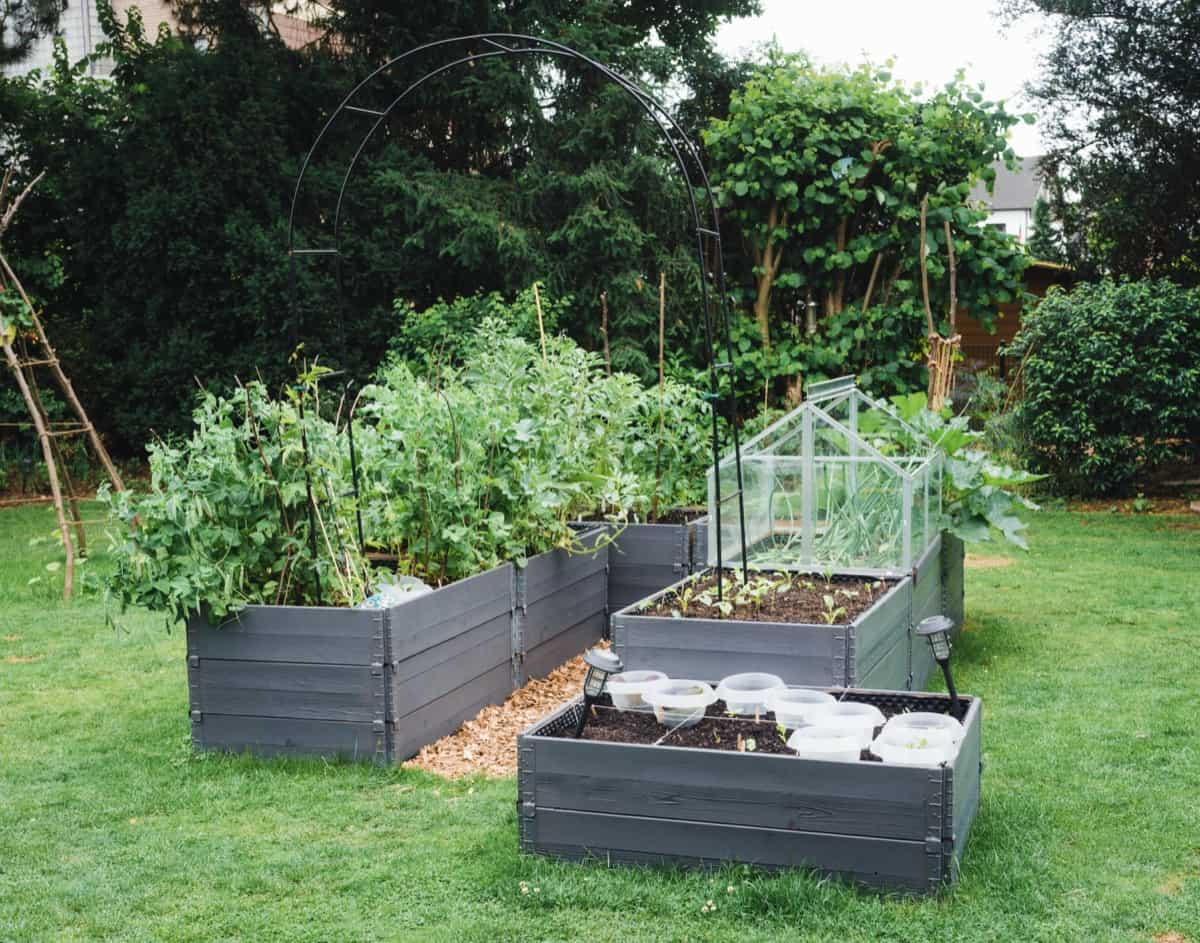
Consider adding decorative touches such as curved corners or patterns with different colored bricks. This can enhance your raised bed’s visual appeal while keeping costs low. Once you have completed stacking all the layers, fill your raised bed with nutrient-rich soil and plant your desired fruits, vegetables, herbs, or flowers.
Utilizing Scrap Wood for DIY Raised Garden Beds
Scrap wood can come from various sources, such as old pallets, discarded furniture, or leftover construction materials. By repurposing these materials, you save money and give them a new lease on life in your garden. It is the best low-cost raised garden bed idea. To ensure longevity, treat the scrap wood with non-toxic sealants or stains that are safe for growing edibles.
Designing a Raised Bed with Gabion Walls
Gabions are wire mesh cages filled with rocks or other sturdy materials, creating a strong and durable structure. These walls can serve as functional barriers and add aesthetic appeal to your garden. Select the desired bed size and shape to create a raised bed with gabion walls. Gabion walls provide excellent plant drainage while retaining soil within the bed.
Using Metal Troughs as Raised Garden Beds
Using metal troughs is a fantastic and inexpensive raised garden bed idea for creating a unique and stylish garden space. These sturdy containers are durable and provide excellent drainage for your plants. Metal troughs come in various sizes and shapes, allowing you to customize your garden bed according to your needs.
In case you missed it: How to Build a Low-cost Pig House: DIY Steps, Barn Design, Shed Requirements, and Cheap Ideas
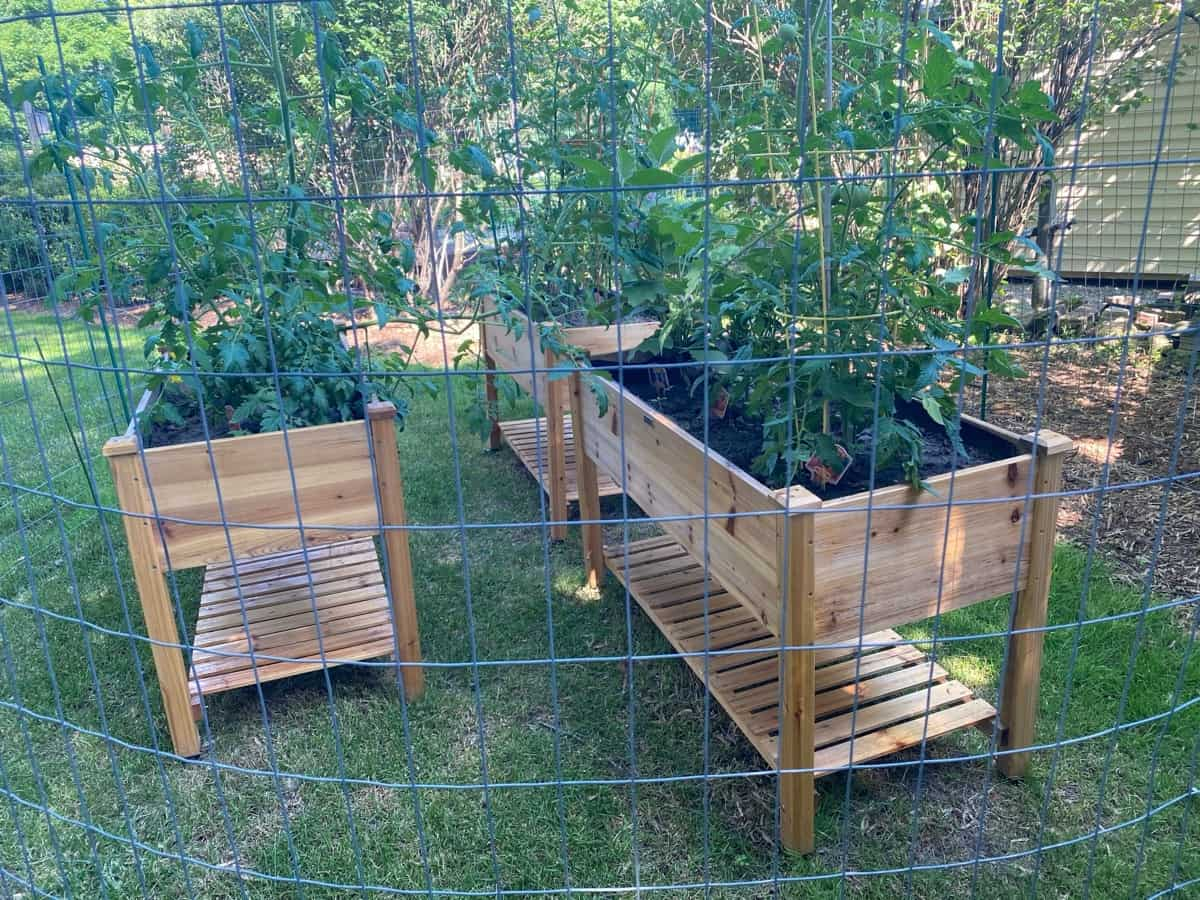
Whether you have a small patio or a large backyard, these versatile containers can fit into any space. Drill drainage holes in the bottom to create DIY raised garden bed ideas with metal troughs. Fill the trough with high-quality soil mixed with compost for optimal plant growth.
Constructing a Raised Bed with Corrugated Metal Sheets
One innovative and budget-friendly idea for building an inexpensive raised garden bed ideas is to use corrugated metal sheets. Not only are they durable and long-lasting, but they also add a modern touch to your garden space. To create this raised bed, measure where you want to place it. Cut the metal sheets according to your desired dimensions using tin snips or a circular saw. Make sure to wear gloves and goggles during this process. Fill the raised bed with nutrient-rich soil, compost, and any other amendments needed for optimal plant growth.
Building a Tiered Raised Garden Bed with Stacked Planters
This design allows you to maximize the use of vertical space and create different levels for planting various types of plants. Choose sturdy and durable planters in different sizes to build inexpensive raised garden bed ideas for small gardens. You can choose from plastic, metal, or even repurposed wooden crates.
Place the largest planter at the bottom and stack smaller ones on top, ensuring each planter has proper drainage holes. One advantage of using stacked planters is that they allow easy watering, harvesting, and maintenance access. Additionally, having multiple levels provides better air circulation and prevents overcrowding of plants.
Creating a Vertical Garden with Hanging Pots or Shoe Organizers
One option is to use hanging pots, easily attached to walls, fences, or suspended from overhead structures. You can select from sizes and materials like plastic, ceramic, or metal. Fill these pots with soil and plant your favorite herbs, flowers, or vegetables. Not only will this add beauty to your garden, but also make harvesting easier.
Another creative approach to building an inexpensive raised garden bed is repurposing shoe organizers into vertical gardens. Hang the shoe organizer on a wall or fence, filling each pocket with soil and plants. This method provides individual compartments for different plants, allowing you to organize them effectively.
Constructing a Raised Bed with Recycled Plastic Barrels or Drums
To get started, find some sturdy plastic barrels or drums. It is a cheap raised garden bed idea for many gardeners. These can often be obtained free or cheaply from local businesses, farms, or online marketplaces. Please make sure they are food-grade and have been thoroughly cleaned before use.
Next, cut the barrels lengthwise to create two halves. This will give you more surface area for planting your favorite fruits, vegetables, or flowers. Once your halves are ready, position them on leveled ground and secure them with metal brackets or zip ties. Fill them with high-quality soil mixed with compost and organic matter to provide essential nutrients for healthy plant growth.
Using PVC Pipes for an Affordable Raised Garden Bed System
One way to use PVC pipes is by creating hoop-style raised beds. By bending the pipes into arcs or hoops and securing them with connectors, you can form a sturdy framework for covering your plants with row covers or netting. This protects them from pests and extends the growing season by providing insulation during colder months.
In case you missed it: How to Build a Shade Net House: DIY in Simple Steps from Scratch for Your Garden
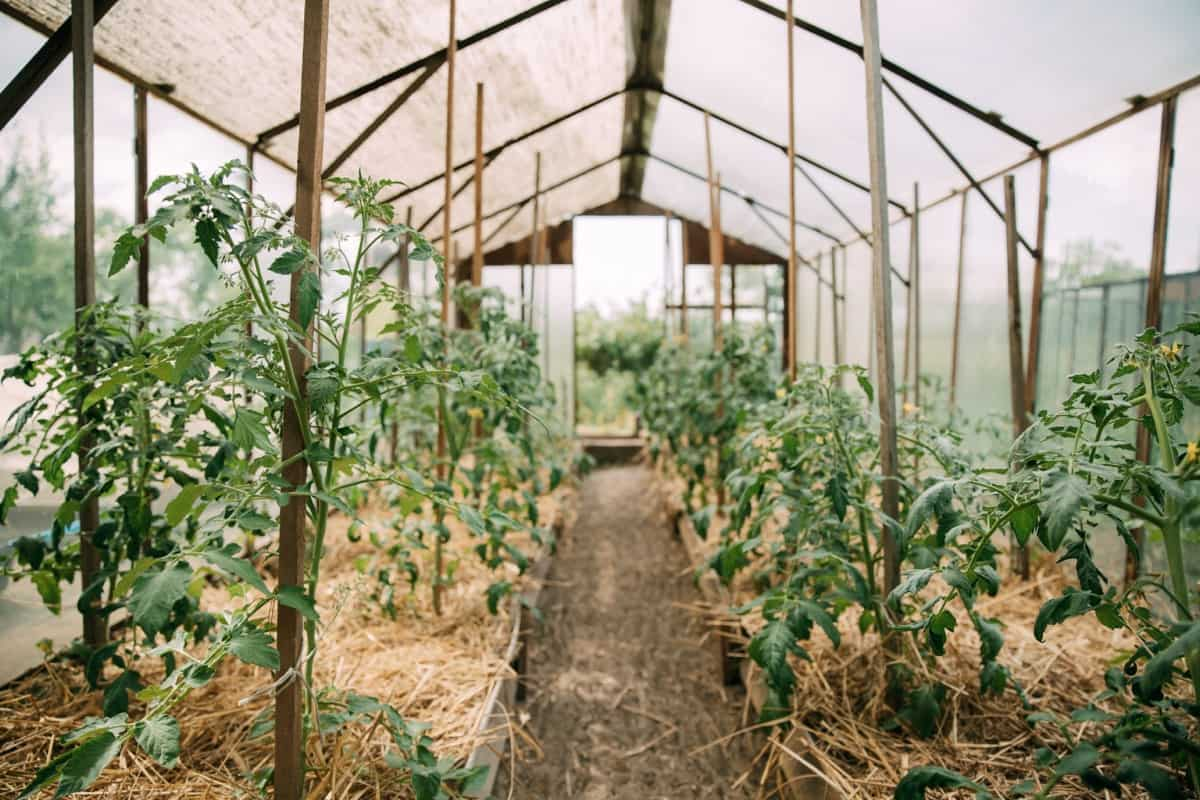
Another option is to build vertical planters using PVC pipe towers. By cutting pipe lengths and attaching planting containers like pots or recycled plastic bottles, you can maximize space and grow more plants in limited areas such as balconies or small yards. These are the money-saving ideas for raised garden beds.
Designing a Wicking Bed for Water-Efficient Gardening
A wicking bed is designed to provide consistent moisture to plants by drawing water up from a reservoir below. This method reduces water waste and ensures that plants receive the necessary hydration without overwatering or underwatering them. Construct a raised garden bed using inexpensive materials such as recycled plastic barrels or wooden crates to create a wicking bed.
You can make an efficient watering system that minimizes water usage while keeping your garden thriving. It’s an inexpensive raised garden bed idea for any gardener looking to make their green space more sustainable.
Building a Hugelkultur Raised Bed with Organic Materials
This unique gardening technique originated in Germany and has gained popularity among eco-conscious gardeners worldwide. The concept behind Hugelkultur is simple yet brilliant. It involves layering logs, branches, leaves, grass clippings, and other decomposable materials at the bottom of the raised bed. These organic materials gradually break down over time, creating a nutrient-rich environment that promotes healthy plant growth.
To build a Hugelkultur raised bed, select your site and mark the dimensions. Dig a trench one foot deep and lay down some large logs or branches as the base layer. On top of this layer, add smaller branches and twigs, followed by grass clippings or leaves. Continue adding layers until you reach near ground level. Remember to water each layer thoroughly as you go along to ensure proper decomposition. Cover the entire mound with compost-enriched soil or mulch.
One of the great benefits of using this method is its ability to retain moisture effectively due to its high organic matter content. Additionally, it is inexpensive raised garden bed ideas on a budget. It provides excellent insulation during colder months while allowing excess water drainage during heavy rains.
Conclusion
Raised garden beds maximize your gardening space and improve the quality of your plants. They provide better drainage, prevent soil erosion, and allow easier weed control. Furthermore, raised garden beds can extend your growing season by providing warmer conditions for plants due to their elevated position.
- How to Build a Low-budget Goat Shed: Cheap Ideas and Tips
- Goat Farming Training Programs in India: A Beginner’s Guide
- Types of Pesticides Used in Agriculture: A Beginner’s Guide
- Economical Aquaculture: A Guide to Low-Budget Fish Farming
- 15 Common Planting Errors That Can Doom Your Fruit Trees
- How to Make Houseplants Bushy: Effective Tips and Ideas
- Innovative Strategies for Boosting Coconut Pollination and Yield
- Pollination Strategies for Maximum Pumpkin Yield
- The Complete Guide to Chicken Fattening: Strategies for Maximum Growth
- Natural Solutions for Tulip Problems: 100% Effective Remedies for Leaf and Bulb-Related Issues
- Revolutionizing Citrus Preservation: Towards a Healthier, Greener Future
- Natural Solutions for Peony Leaf and Flower Problems: 100% Effective Remedies
- Maximizing Profits with Avocado Contract Farming in India: A Comprehensive Guide
- Natural Solutions for Hydrangea Problems: 100% Effective Remedies for Leaf and Flowers
- The Ultimate Guide to Choosing the Perfect Foliage Friend: Bringing Life Indoors
- From Sunlight to Sustainability: 15 Ways to Use Solar Technology in Agriculture
- The Ultimate Guide to Dong Tao Chicken: Exploring from History to Raising
- The Eco-Friendly Makeover: How to Convert Your Unused Swimming Pool into a Fish Pond
- Mastering the Art of Delaware Chicken Farming: Essentials for Healthy Backyard Flocks
- 20 Best Homemade Fertilizers for Money Plant: DIY Recipes and Application Methods
- How to Craft a Comprehensive Free-Range Chicken Farming Business Plan
- Brighten Your Flock: Raising Easter Egger Chickens for Beauty and Bounty
- How to Optimize Your Poultry Egg Farm Business Plan with These Strategies
- Subsidy for Spirulina Cultivation: How Indian Government Schemes Encouraging Spirulina Farmers
- Ultimate Guide to Raising Dominique Chickens: Breeding, Feeding, Egg-Production, and Care
- Mastering the Art of Raising Jersey Giant Chickens: Care, Feeding, and More
- Ultimate Guide to Raising Legbar Chickens: Breeding, Farming Practices, Diet, Egg-Production
- How to Raise Welsummer Chickens: A Comprehensive Guide for Beginners
- How to Protect Indoor Plants in Winter: A Comprehensive Guide
- Ultimate Guide to Grow Bag Gardening: Tips, Tricks, and Planting Ideas for Urban Gardeners
- Guide to Lotus Cultivation: How to Propagate, Plant, Grow, Care, Cost, and Profit
- Agriculture Drone Subsidy Scheme: Government Kisan Subsidy, License, and How to Apply Online
- Ultimate Guide to Raising Araucana Chickens: Breed Profile, Farming Economics, Diet, and Care
- Bringing Hydroponics to Classroom: Importance, Benefits of Learning for School Students
- Ultimate Guide to Raising Polish Chickens: Breed Profile, Farming Economics, Diet, and Care
- Ultimate Guide to Raising Australorp Chickens: Profile, Farming Economics, Egg Production, Diet, and Care